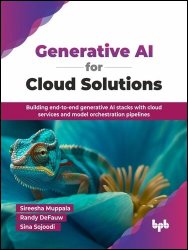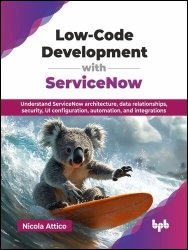- Добавил: literator
- Дата: 28-05-2025, 03:19
- Комментариев: 0
 Название: Generative AI for Cloud Solutions: Building end-to-end generative AI stacks with cloud services and model orchestration pipelines
Название: Generative AI for Cloud Solutions: Building end-to-end generative AI stacks with cloud services and model orchestration pipelinesАвтор: Sireesha Muppala, Randy DeFauw, Sina Sojoodi
Издательство: BPB Publications
Год: 2025
Страниц: 316
Язык: английский
Формат: epub (true)
Размер: 15.2 MB
Generative AI is transforming every industry, with applications ranging from creative content generation, simple chatbots, to entirely new ways of engaging with consumers. But there is as much uncertainty as buzz—understanding how to use this technology securely and responsibly, and recognizing what the pitfalls are. In this book, we will put together a complete picture of Generative AI development on modern cloud platforms, covering all stages of building and operating a production-grade solution with consideration for performance, security, governance, and responsibility. Conceptual discussions will be accompanied by functional examples, using working code on Amazon Web Services (AWS) cloud to demonstrate key concepts. We will explore the full lifecycle, from initial model selection and fine-tuning to production deployment, monitoring, and ongoing operation. Key aspects include prompt engineering, data integration techniques, observability, the shared responsibility model, and the full solution lifecycle from design to operation. Additionally, we will discuss recommendations for prioritizing a Generative AI roadmap for organizations and emerging trends in the field.









